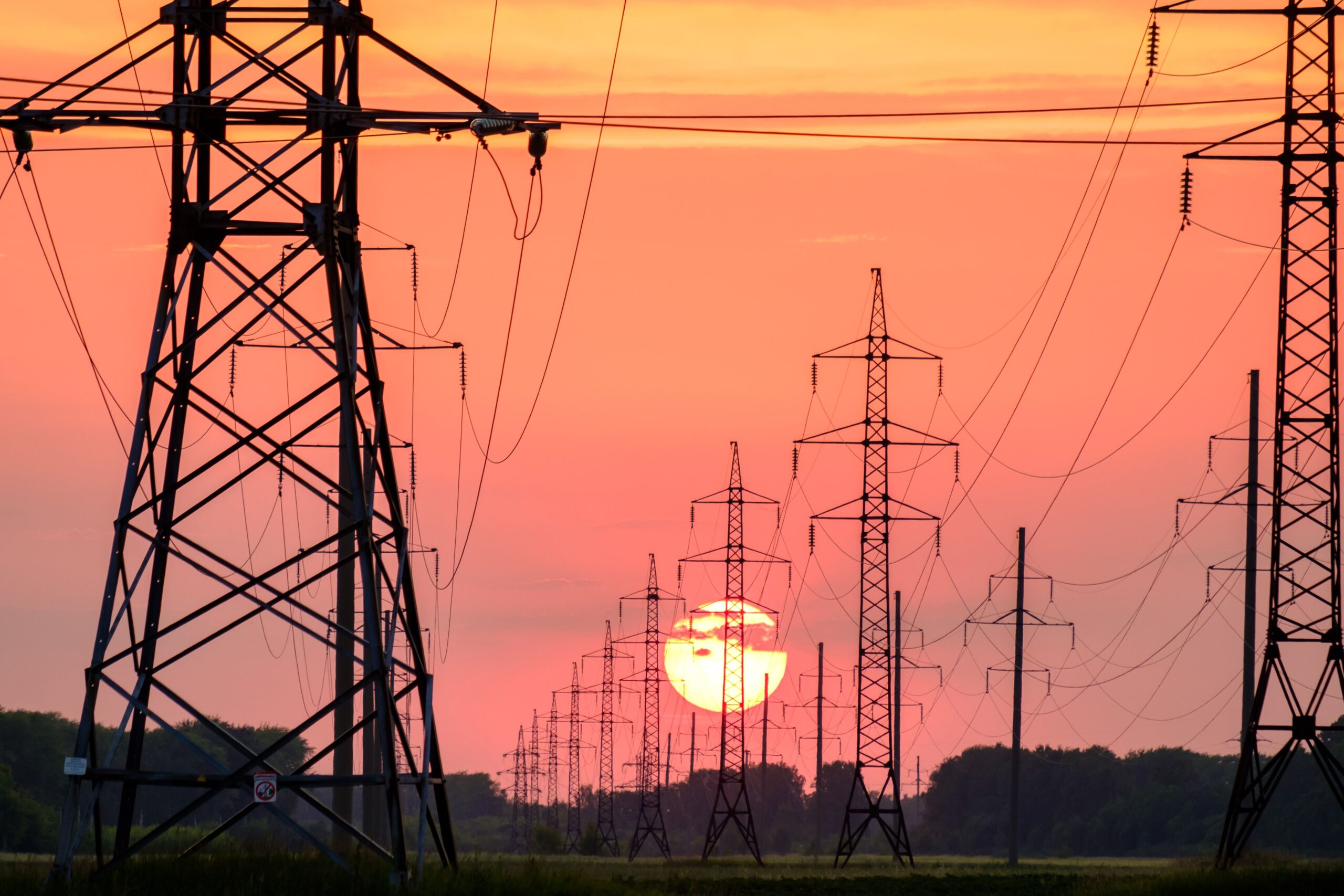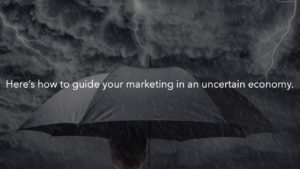Transitioning customers to Time-of-Use (TOU) rates presents a challenge for any utility, but it’s also an important step toward a more sustainable and cost-effective energy future. TOU rates incentivize customers to shift their energy consumption to off-peak hours, reducing strain on the grid during peak hours and helping to reduce overall energy costs – in ol’ skool terms – flatten the duck curve. As you may be aware, utility customers often hold onto their old rates out of concern that their energy costs will increase, making it difficult for utilities to transition without damaging their brand image.
That’s where marketing comes in. By developing targeted messaging, using a variety of channels, highlighting the benefits, providing education, and leveraging data, utility providers can effectively promote TOU rates to their customers and encourage them to make the switch. In this blog post, we’ll explore these strategies in more detail and provide tips for utility providers looking to transition their customers to TOU rates through cutting-edge marketing tactics. You may ask, why should we listen to you? Well, our team at IDLab executed the first-ever TOU (time of use) message, communications strategy, and media plan for 30M people. Needless to say, if you need insights into how to navigate your impending TOU transition, you came to the right place.
Big Brand Opportunity (Mind Your Architecture)
Whether you deploy default or opt-in TOU, the new rates open a huge brand opportunity that doesn’t come around very often for a utility; and one you have to capitalize on.
TOU rates represent a whole new way in which your customers will engage with your brand, your product (energy), and the devices they depend on in their daily lives. Because TOU sensitizes your customers to when they use their devices and for how long, it puts you top-of-mind every day – more than your brand has ever been top-of-mind before.
We’ve all read Accenture’s infamous “8 mins. a year” utility brand engagement assertion. Well, if you properly brand, position, and message TOU it will turn that into 8 min. a month (that’s a . 1,200% increase per year in brand engagement) you can do the math on how much it would cost you in paid media to get that kind of brand lift.
So how do you do it? Here is a quick cheat sheet to give you the basics:
- Embrace the fact that you need to build a brand around TOU and not see it as yet another rate structure
- Determine the brand characteristics that you’ve been wanting to infuse into your parent brand and make those part of your TOU brand to take advantage of the “halo effect”
- Position TOU as a product designed to enable customers to get the best deal on electricity
- Support the “best deal” claim by telling them that when you buy energy cheaper, you are now able to pass that lower cost onto them
- Make sure your messaging plays into the ego of your customers as savvy shoppers, ahead of everyone else in finding and saving with the best deals, how it’s so simple to be the masters of how much they pay for the energy, and how TOU really is the easiest way to pay for energy
- Tailor/prioritize these core sentiments to each of your segments (see below)
When it comes to your brand architecture, you need to make a conscious decision as to where TOU resides in your hierarchy and how it relates to your other brands (especially your parent brand). We suggest it takes a second position to your parent brand with all communications referencing your TOU “brand.” This keeps the wise use of energy top of mind for your customers and contextualizes the TOU brand with all of your other services – increasing savings, and the feeling of support for customers and draws a direct correlation with how TOU fits within other key programs.
Establish a Deeper Understanding of Your Customers
The journey to transitioning utility customers to Time-of-Use (TOU) rates begins with a deep understanding of your customer base. Every customer is unique, with diverse preferences, needs, and motivations. A successful transition requires recognizing these differences and tailoring your approach accordingly.
Start by Segmenting Customers for Maximum Effectiveness
Yes, the following may seem self-evident, but we’ve worked with so many utilities that didn’t do this and it caused a lot of issues that we had to fix. Start by segmenting your customer base into distinct personas. These personas represent different groups of customers who share similar characteristics, behaviors, and preferences. The personas that have come to the forefront for us on numerous occasions are the “Skeptics,” who are hesitant about TOU rates, the “Price-Conscious,” who prioritize cost savings, the “Environmentally Conscious,” who are concerned about sustainability, and the “Tech-Savvy,” who embrace technology-driven solutions.
Each persona has its own set of motivations and concerns. By understanding these personas, you can move on to create targeted messaging and engagement strategies that resonate with each group.
Develop Tailored Messaging to Establish an Emotional Connection
A key aspect of understanding your customers is crafting messaging that resonates emotionally – the key here is EMOTION. So many utilities fall victim to basing all messaging on intellect (save money) – not a single human makes a final decision based purely on intellect, not one. So why start with an intellectual message? Start with emotion. Move beyond generic statements like “save energy/save money” and focus on themes that evoke emotions specific to each persona.
For instance, for the Price-Conscious group, emphasize getting the best deal through TOU rates. For the Environmentally Conscious, highlight the positive environmental impact they will immediately have on themselves and their family. Tailor messaging for the Tech-Savvy group around the convenience and control offered by TOU rates through advanced technology.
Personalize Engagement to Meet Customer Needs
Engagement strategies should be personalized to each persona’s preferences and communication channels. The Price-Conscious group might respond well to detailed information and cost comparisons, while the Tech-Savvy group may prefer digital channels and interactive tools.
Utilize a multi-channel approach. The best channels to start with are (we’ve proven these are the best channels to start with on several TOU initiatives) email, social media, website content, and video marketing. Plus, put a significant amount of budget/effort into SEO. SEO will become a huge win for you within 90 days as it saves you paid media dollars (more on this in a moment). Also, tailor the content and timing of your communications to align with each persona’s behavior and preferences. This ensures that your messaging reaches the right customer at the right time, increasing the likelihood of engagement.
Lean on Emotion-First Messaging
We mentioned this earlier and it’s worth expanding on. When transitioning utility customers to Time-of-Use (TOU) rates, it’s essential to recognize that customers are not just numbers on a spreadsheet; they are individuals with emotions, aspirations, and concerns. Emotion-first messaging is a powerful tool that a strong and lasting connection; and motivates customers to take action. Outlined below are the keys to establishing an emotion-first messaging strategy.
- Move Beyond the Basics: Traditional messaging often relies on rational appeals such as “save energy/save money.” While these messages hold value, emotion-first messaging goes a step further by addressing the underlying desires and motivations that drive customer behavior.
- Craft an Emotional Theme: Start by delving into the emotional landscape of your customer personas. What are their hopes, fears, and aspirations? For instance, the Price-Conscious persona may be motivated by the desire to make prudent financial decisions, while the Environmentally Conscious persona is likely driven by a commitment to sustainability.
Build a messaging platform that resonates with these emotions. Rather than merely presenting facts, weave a narrative that aligns with customers’ self-perception and values. In the case of TOU rates, we’ve found that “the best deal on electricity” repeatedly works best. As a note of caution, don’t fall into the trap of messaging “empowerment” or “control.” Customers say they want this at first, but when you really dig into they see these words saying that they will have more to do/manage – they feel they already have enough to do, so this isn’t a welcomed message. You can highlight how TOU rates give them the ability to take charge of their energy costs – the word choices/nuances are important here.
- Cut Through the Noise: In a world inundated with information, emotion-first messaging has the power to cut through the noise and capture customers’ attention. By appealing to their emotions, you create a compelling story that stands out in their minds. This emotional resonance creates more memorable and impactful communication, increasing the likelihood of engagement and action.
- Build Trust and Relatability: Emotion-first messaging builds trust by establishing a relatable and authentic connection with customers. When customers feel that a message speaks directly to their desires and concerns, they are more likely to view your utility as understanding and empathetic.
For example, you might use relatable scenarios in your messaging. You could draw parallels between seeking the best deal on energy and their everyday experiences of finding bargains or optimizing their digital lives.
- Quantify the Impact: Emotion-first messaging can be quantified in terms of engagement rates, conversion rates, and even customer sentiment. Track how customers respond to different emotional themes and messages. Are certain personas more likely to engage when their emotions are tapped into? Are conversion rates higher when messaging connects on an emotional level?
Emotion-first messaging transforms the utility-customer relationship from transactional to meaningful. By crafting messaging that speaks to customers’ emotions, desires, and values, you can create a connection that resonates deeply. Remember, the goal is not just to inform but to inspire action. By appealing to emotions, you’re not only driving TOU rate adoption but also fostering a stronger, more loyal customer base that values your utility as a partner that fulfills their energy.

Use Owned-Media First
Transitioning utility customers to Time-of-Use (TOU) rates requires a strategic approach to owned media engagement that reaches customers where they are, delivers the right message, and guides them toward making informed decisions. By aligning targeted messaging, SEO best practices, and effective email strategies, you will create a comprehensive owned media strategy that maximizes engagement and conversion.
After 90 days of marketing and testing via owned media, use your new insights and quickly expand into paid media to increase reach and frequency.
Enhance Visibility and Accessibility by Following SEO Best-Practices
Fully embrace and master search engine optimization (SEO) best practices to enhance the visibility of your content and ensure it reaches customers actively seeking information about TOU rates. By optimizing content with relevant keywords, you will improve your utility’s ranking in search engine results. One of our TOU clients wasn’t following SEO best practices, and we had to break it to them that when their customers search on TOU, every one of them got TOU information from a utility that was literally on the other side of the country. Within 90 days, we fixed using best practices and to this day, they are always in the top 3 on the SERP.
Use tools like SurferSEO to refine content elements such as keywords, content structure, and image placement – all in real-time. Deploy multiple Google FAQ schemas, and ensure pages are mobile-responsive to provide a seamless user experience across devices.
Strategically craft content that addresses common customer queries and concerns. By offering valuable and relevant information, you position your utility as a trusted source of knowledge, increasing the likelihood that customers will engage with your owned media channels.
Nurture Customer Relationships by Adopting a Targeted Email Strategy
Email is still a highly effective way to engage customers through owned media channels. To optimize engagement, create a three-part email structure that is personalized for each persona and their stage in the decision-making process. To get the highest level of engagement from your audience, leverage the following three-part structure:
- Promotional Emails: Generate awareness and position TOU rates as a valuable option. Highlight key benefits, addressing specific persona motivations. Utilize segmentation to send these emails to the most relevant recipients.
- Drip Campaigns: For customers who haven’t taken immediate action, send a series of follow-up emails. Vary the messaging angles to approach conversion from different perspectives, such as cost savings, environmental impact, or convenience.
- Nurture Emails: After customers switch to TOU rates, solidify their decision with affirmation messages. Provide tips and guidance to help them maximize their benefits. Reaffirm that they made the right choice and are still getting the best deal.
Precision timing is essential in your email strategy. Send emails at times when your customers are most likely to engage. Consider their typical email-checking patterns and behavior to optimize open and click-through rates. As a rule of thumb – Tuesday to Thursday from 7 am to 4 pm are the best day/day parts.
BONUS ADVICE: Build the tech that gives your customers the ability to click from the email directly into their account (no landing/login page required). For opt-in TOU, this will increase your conversion by 20% and for default, it will increase engagement and positive sentiment by 15%.
Leverage Iterative Research and Data-Driven Decision Making
Research, Iterate, Repeat
Testing is a vital component of iterative research. When you have developed messaging, engagement strategies, or communication channels, put them to the test. A/B testing allows you to compare different approaches and gauge customer responses. Remember, assumptions can lead to missteps, but testing validates your strategies with real-world data.
Conducting comprehensive customer research, including surveys, focus groups, and behavioral analysis, is crucial. Embrace a mindset of trust in research findings and uncover valuable insights that will help you segment your customer base, understand their motivations, and identify potential barriers to TOU rate adoption.
By relying on data, you reduce uncertainty and minimize the risk of investing resources into unproven tactics. In the context of the TOU rate transition, data-driven decision-making leads to more effective engagement and higher conversion rates.
Start by defining key performance indicators (KPIs) that align with your TOU rate transition objectives. These include:
- Engagement rates
- Conversion rates
- Customer sentiment scores
- Dwell time
- Unique views
- Total new page consumption per user
Regularly analyze the data to assess how your strategies are performing against these benchmarks.
Leverage analytics tools to measure the previously defined KPIs and gain insights into customer behavior. Track how customers interact with your owned media channels, such as:
- Website visits
- Email open rates
- Email CTR
- Video engagement and view-through rate
- Social mentions and sentiment
Use this data to identify patterns and trends, enabling you to optimize your engagement strategies accordingly.
Iterative research and data-driven decision-making go hand in hand. Testing different approaches and analyzing the results provides you with the data needed to refine your strategies. If a particular message or engagement tactic is not resonating, the data will guide you toward necessary adjustments.
In the dynamic landscape of TOU rate transition, iterative research and data-driven decision-making are your compass and map. Trust in your research findings, continuously gather data, and use analytics to refine your strategies. By doing so, you create a robust and adaptable approach that resonates with your customers, fostering engagement, conversion, and long-term satisfaction. Remember, your customers’ insights and actions are your most valuable data points, guiding you toward success in the TOU rate transition journey.
Partnering with IDLab Global: Your Path to a Successful TOU Transition
Navigating the intricacies of transitioning utility customers to Time-of-Use (TOU) rates requires more than just a strategy; it demands a TOU-experienced partner who understands the nuances of the energy industry and possesses a proven track record of success in both TOU and other energy programs. This is where IDLab Global comes into play – a distinguished utility marketing agency equipped to guide the journey for you and your customers with expertise, innovation, and a dedication to driving results. We’ll put you on a proven pathway to navigate you through the complexities of the TOU rate transition, so you achieve your objectives simply and quickly. Making evaluators, regulators/commissions, stakeholders, and your leadership team very happy.
Industry Insight and Expertise
Our team at IDLab Global is comprised of seasoned professionals who have immersed themselves in the energy industry. We understand the unique challenges utilities face when it comes to transitioning customers to TOU rates. Leveraging our deep-rooted expertise, we unravel the intricacies of customer behavior, preferences, and motivations, enabling us to tailor strategies that resonate with your diverse customer base.
Proven Strategies for Engagement and Conversion
Our success stories speak volumes about our capabilities in utility marketing. We’ve consistently driven engagement and conversions through our comprehensive approach to targeted owned media engagement. By harnessing the power of customer segmentation, SEO optimization, and email strategies, we’ve achieved remarkable results, exceeding industry benchmarks and elevating customer adoption rates. With IDLab Global, you gain access to battle-tested strategies that can steer your TOU rate transition toward a win (or multiple). Want to get a glimpse of those strategies? Download our guide to energy marketing fundamentals.
Data-Driven Decisions and Iterative Research
Our ethos revolves around the principles of data-driven decision-making and iterative research. We recognize that every utility’s customer base is unique, and a one-size-fits-all approach won’t suffice. Through rigorous testing, continuous analysis, and a commitment to refining strategies based on real-world data, we ensure that your TOU rate transition is not a shot in the dark, but a journey guided by evidence and continuous improvement.
Emotion-First Messaging that Resonates
At IDLab Global, we excel in emotion-based messaging. We know that establishing an emotional connection with customers is crucial. Our specialty is creating messages that trigger feelings, wants, and dreams, inspiring customers to act. With IDLab Global, changing to your new TOU rates is more than just a rate adjustment; it’s an engaging experience that builds a long-lasting relationship between your utility and your esteemed customers.
As you begin your journey towards the transformative TOU rate transition, IDLab Global is your sherpa along the mountainous (and often rocky) climb to TOU success. Our expertise in industry insights, data-driven approaches, and emotion-first messaging makes us the perfect partner to achieve your rate transition goals. With IDLab Global on your side, you will empower your customers and propel your utility toward a successful future.
Uplevel your utility company’s success with our award-winning energy marketing expertise. At IDLab Global, we understand the unique challenges and opportunities that come with marketing for utility companies. Our tailored marketing strategies are designed to amplify your customer engagement and drive exponentially higher program participation and adoption.




